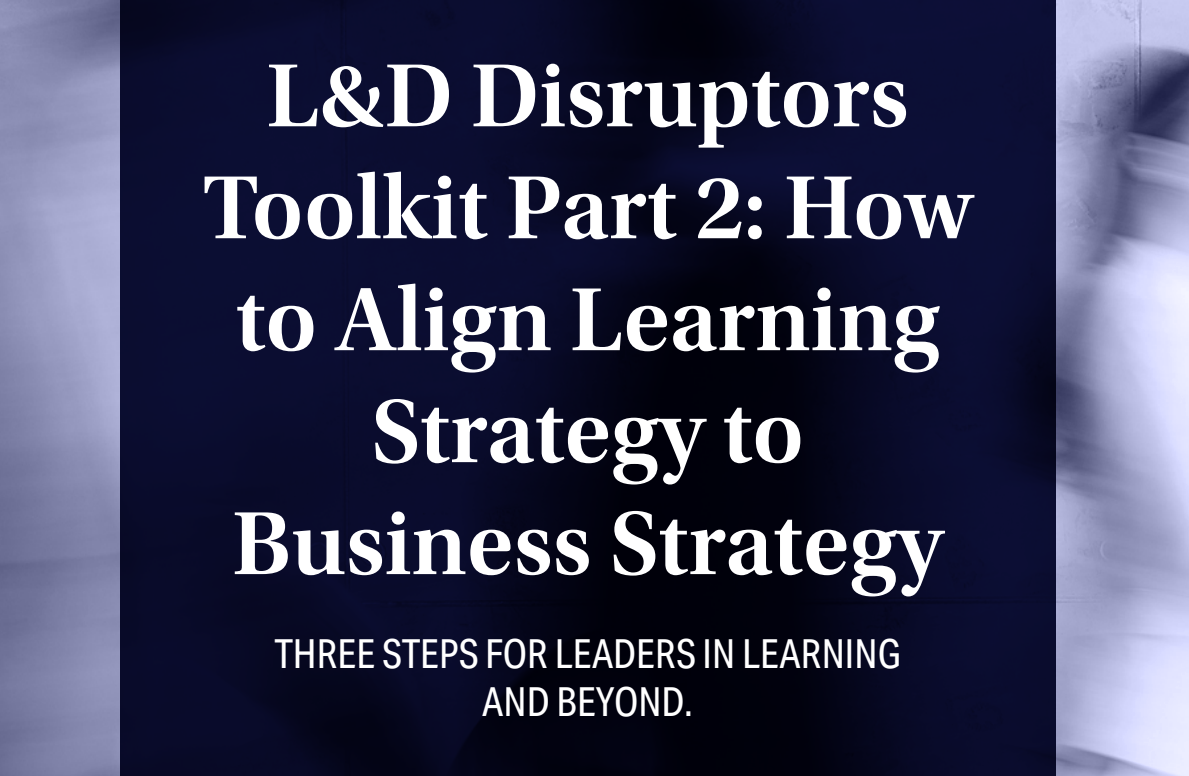What are the measures of L&D Disruptors and how would you measure up?
Aug 19, 2024 by Robert M. Burnside

In Learning and Development (L&D), there exists a distinct group of professionals who are not just participants in the industry but trailblazers—true disruptors. They are found at all levels of the hierarchy, but what sets them apart isn’t their titles, it’s their approach to change, their understanding of learning as a strategic lever, and their sharp focus on results.
They are not confined by the traditional boundaries of L&D, with 93% having worked outside the L&D function, many for over a decade. Their diverse experience shapes their unique perspective, that learning is not an isolated function but a critical component that drives business transformation.
Exploring how the respondents to Nomadic’s L&D Disruptor Quiz rate themselves, it’s clear that they are not just shaping the future of learning—they are redefining it. Take a look at their ratings, measure yourself against their characteristics and competencies, and add them to the ways you can use learning to transform organizations.
Those who have taken the Nomadic L&D Disruptor Quiz characterize themselves as follows:
Where are they in the hierarchy? L&D Disruptors are at all levels: 38% are Director/ VP level and above, 33% are managers and 29% are individual contributors.
Have they ever worked outside L&D? 93% have worked outside the L&D function in their careers, with 44% more than 10 years outside L&D. Clearly disruptors have experienced a variety of functions. Perhaps this is part of the reason they understand learning in a way that is results focused.
Do they hold any power? 44% have managed budgets greater than $1 million, 47% have managed a P&L along their way, and 71% have had their roles reporting to the C-suite, so we can see the disruptors also hold power and are not afraid of holding power.
Are they risk takers? 51% said they had quit a role due to excessive bureaucracy - it’s clear they don't want to be put in a box. 84% have implemented an initiative that was risky, e.g. costly, new, innovative, unpopular, etc. So we can say they are unafraid to try new things.
How do they define their top competencies? They rate them as strategic thinking, team leadership, change management and design thinking - the competencies necessary to transforming organizations.
What are their personal characteristics? They say other people would describe them as: lifelong learners, collaborative, open minded and results driven: someone others find easy to work with.
What are the top learning principles they use to guide their work? There is strong agreement on the top 7 principles, rating on a 5 point scale:
- Learning is a continuously evolving activity (4.9)
- Learning can transform organizations (4.8)
- Learning is best designed with stakeholder engagement (4.6)
- Success depends on learner engagement (4.6)
- Learning is the most important organizational focus for meeting the demands of the future (4.2)
- The most valuable learning occurs between people, sharing from their lived experience (4.2)
- Learning is best demonstrated by how it translates into business results (4.1)
Do they rate themselves highly? Our quiz scores went from 0 to 87 total points. We can clearly say, L&D Disruptors are modest, they are not arrogant. 28% of respondents rated themselves 40 or less, 47% rated themselves right in the middle between 41 and 50 points, 27% rated themselves between 50 and 70, and only 1% rated themselves higher than 71. So we can say L&D Disruptors are good at managing learning because they aren’t arrogant, thinking they know the answer. Instead, they are curious and they ask questions, they prefer to understand what is really happening, not just impose what they think is happening.
How do you measure up? L&D Disruptors may not be the person shouting “Look at me, I have the answers!”, instead they are working from behind to discover the actual issues and potential solutions, putting the business leader and the learners front and center, using their strategic thinking, team leadership, change management and design thinking competencies, with long term outcomes in mind, guided by knowing learning is a continuously evolving activity, that it can transform organizations, is best designed with stakeholder engagement, depends on learner engagement, is the most important organizational focus for meeting the demands of the future, that learning occurs between people sharing from their lived experience, and that it is best demonstrated by how it translates into business results.
These are high standards, but they are how learning can transform organizations. Take the quiz to rate yourself. You can learn more about how L&D DIsruptors operate in our L&D Disruptor Toolkit series.



-(1).png)